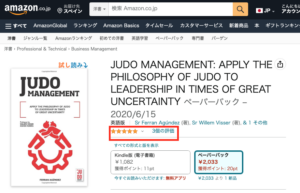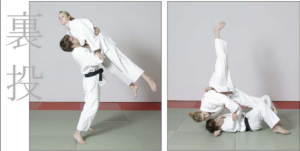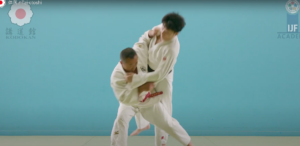RANDORI and SHIAI
Where kata is called exercise, is randori game and shiai sport (sport is game in competition with each other, individually or in a team).
It is useful to look at some scientific definitions of game and sport for example from Huizinga, Guttman, Mandell and others.
– Game is a voluntary activity with limits and time limits, according to accepted and binding rules, with the goal in itself and with a pleasant tension by doing something different than in normal life.
So in this definition ‘pleasant tension and doing something different’ is more important than performance and result.
For sport, as well as for game, more definitions can be given, for example:
– (Game) activities aimed at physical and mental efforts with result and achievement as a goal;
– Social phenomenon related to contest and competition elements;
– Physical game activity in competition;
– A modern definition of sport is: contest and competition in a great number of physical-mental activities, in which ambition, efforts and overcoming all kind of obstacles lead to measurable and comparable results.
Result can be objective, for example championships; and result can also be subjective, for example when achieving personal goals or improving personal performances.
In a number of the above mentioned definitions the contest is the central object.
Linguistically we also practice sport when we run, ride or swim without competition, unless one competes with oneself; better, further, faster (subjective performance).
A definition for judo as a sport is easy to give, based on the ‘modern definition’.
One may not forget, that Kano Jigoro Shihan was giving his utmost ‘to make’ judo and Olympic sport and to promote Kodokan Judo his students were participating in many judo contests! So Kano Jigoro Shihan was certainly not an opponent of shiai.
The definition of randori can be given:
Randori is ‘the free game of attack and defence in judo’, in which the judoka can use judo techniques in nage waza and ne waza.
The aim in randori is to throw or to control the opponent in the game. (As well as osae waza shime and ude kansetsu waza are control techniques, however with giving up as a result.)
And in this free game, randori, the judoka chooses techniques that suit the judoka and apply the judoka in ‘the game specific situation’.
In randori one learns to quickly and adequately respond to constantly changing, often unforeseen, situations (complex result oriented movement).
The main goal of randori is: personal development. And….randori offers the best opportunity for that personal development. (See also the article: ‘Fighting with dignity’ by willem visser)
Randori therefor ‘carries the goal within itself’.
Many comparisons are incomplete and perhaps this one too:
If kata is the grammar of judo then randori is the prose.
Figurative in randori ‘one writes one’s own book’, in randori ‘one makes its own judo’; in randori one can possibly use what was practiced in kata.
Earlier in this article I gave, as an intermezzo, a (possible) development course in judo. In this development we see a long-term development of technique, which must be accompanied by playing the judo game: RANDORI.
Randori must never be lacking in the development of a judoka. Randori may never be missing in a judo training.
Randori is the best preparation for shiai!
Looking back on the ‘intermezzo’, in which suggestions for the development of a judoka and graduation requirements, than we see that for a very long period, up to and including 3rd dan judo, the main part of the development consists of technique training and of course the free judo game, randori! In fact, judoka are learning the techniques to use these in randori and shiai.
Recently I read, that at a certain judo seminar one was thinking and discussing (hopefully in this order) about the number of judoka that is practicing judo; that number would decline.
And that decline could be stopped by the development and promotion of youth-kata?
After reading this very wrong statement, I was in a state of dismay for some time!
It would be too satiric to reflect all associations that this evokes in me; one does not even look for the solution in the wrong corner, but where it is absolutely not (normally this is called ‘blindness’)! And again I refer to the intermezzo in which one can read, that depth starts at the 4th dan.
Of course kata practice is useful and praiseworthy; however it should not become an obsession, because obsession dazzles!
The solution to stop the, alleged, decreasing number of judoka is to execute the suggestions in the ‘intermezzo’ (one can see how important an intermezzo can be); so learning techniques and playing the game of judo, randori! This has to be done according to the age and the stage of development.
Perhaps more important than to stop the, alleged, decreasing number of judoka, is, that executing the suggestions of the ‘intermezzo’ develops judoka in the right way!
It is easy for judo teachers, to stand ‘with the arms folded or not’, to teach kata. (Attrition oriented moving.)
It is much more difficult for teachers ‘to roll up their sleeves’ and teach judo techniques with the sweat on the back and guide judoka in practicing the game of judo, randori. (Complex result oriented moving.)
By practicing the game of judo, randori, the number of judoka will increase and the personal development of judoka will be much better; also the level of judo will rise enormously, so that the popularity of judo as a competitive sport will increase as well.
In my opinion one has to pay the most attention to this, based on the principle:
Everything must lead, with maximum effectiveness, to general well-being!
Youth-kata does NOT lead to general well-being with maximum efficiency!
Randori leads to general well-being with maximum efficiency; and randori offers the best possibility for personal development!
Next article: Judo, the importance of randori and kata (3) Kodokan Go Kyo no Waza
Willem Visser
Executive coach, Strategic Adviser, International Lecturer, 8th Dan Judo IJF
With gratitude to all my teachers, specialists, colleagues and especially all the judoka that I was allowed to guide and to coach.
Sources and inspiring professionals:
Van der Horst, Cobben, Abe, Saitoh, Yamashita, Uemura, Sugawara, Murata, Hosokawa, Komata, Takahashi, Nakamura, Kasuga, Kawashima, Kariya, Brousse, Besson, Rougé, Ruska, Geesink, de Cree, Barta, Vachun, Viser, Lascau, McConnell, Snijders, Sins, Hoogendijk, Boersma, Odinot, van Dijk, Klok, Agúndez, Landsberg, Covey, de Waal, DeCaluwe, Drucker, Franzen, Goldratt, Hammer, Kets de Vries, Kotler, Mastenbroek, Mintzberg, Peters, Porter, Quinn, ten Bos, Trompenaars, Vinke, Weggeman, Wissema and many others.




